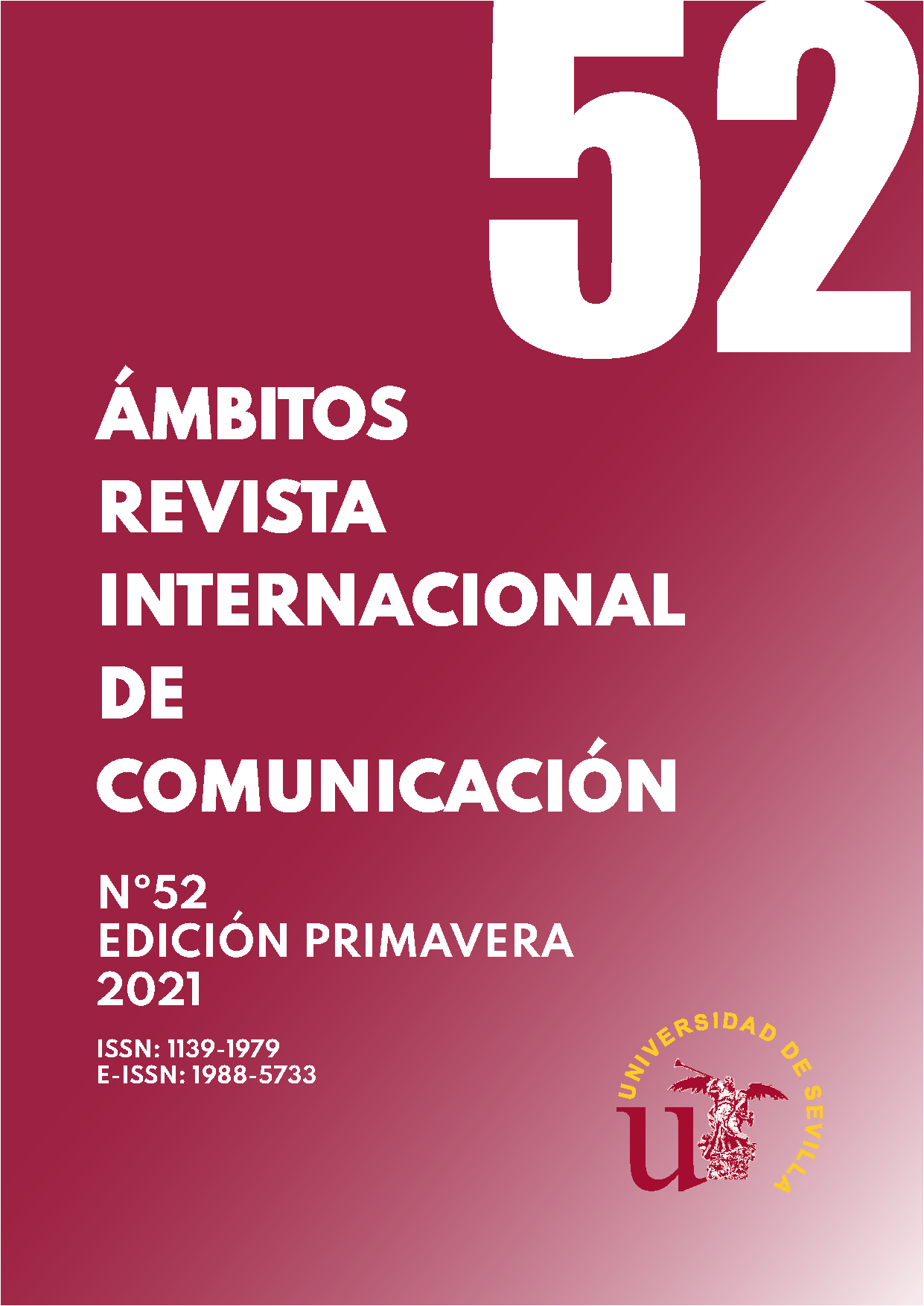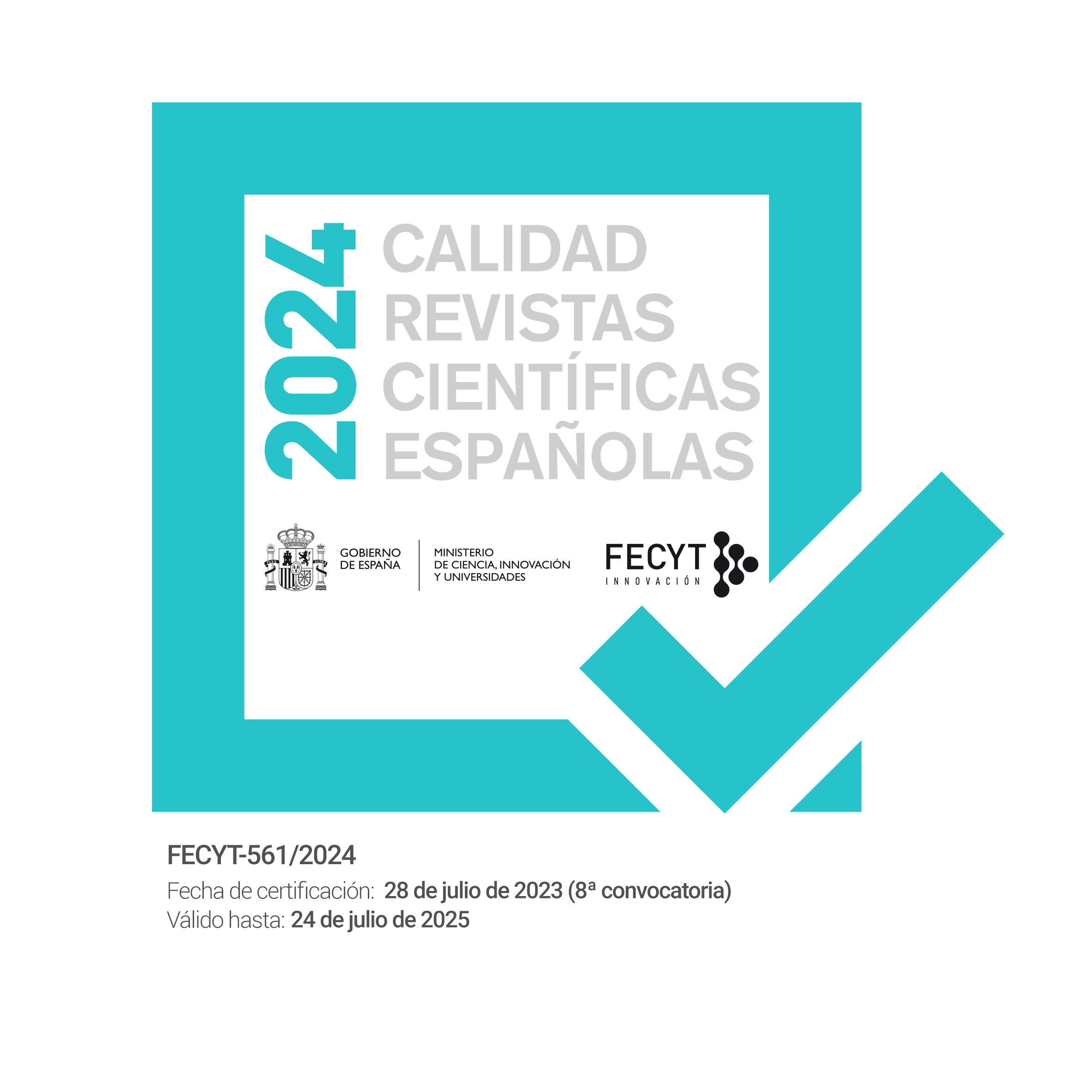Cine de la crueldad y plataformas streaming: La erotización de la perversidad en las series mainstream Years and years y Chernobyl
DOI:
https://doi.org/10.12795/Ambitos.2021.i52.11Palabras clave:
cine de la crueldad, cultura mainstream, streaming, abyección, comunicacionResumen
Actualmente, alejados de aquellos tiempos de guerra entre el cine y la televisión de masas e inmersos en una cultura de las series cada vez más accesibles gracias a las plataformas streaming, las series empiezan a ser reconocidas como obras de arte que critican a las altas esferas de poder, signo propio de la tercera edad dorada de las series, y donde reside la verdadera originalidad audiovisual a ojos de las grandes audiencias en detrimento de un cine que parece cada vez más estancado o carente de interés. En plena revolución del panorama industrial del audiovisual, caracterizado por el éxito de las plataformas streaming, aparece un consumidor cada vez más democratizado, heterogéneo y cercano a la visión de “consumidor” más que de “espectador”. Adicionalmente, el audiovisual de masas recupera una visión perversa, hiperrealista, denunciativa y moralista que retrotrae al cine de la crueldad enunciado por André Bazin. Por todo ello, se diagnostica el fenómeno de la pornografía del horror, la estetización o la abyección cinematográfica, ya debatida por Jackes Rivette y Serge Daney en la segunda mitad del siglo XX, con el objeto de unir lo depresivo con el espectáculo en series actuales. Por todo ello, se ha procedido a la realización de un estudio de casos, mediante un análisis de carácter exploratorio y descriptivo, de las series Years and years y Chernobyl a fin de diagnosticar la presencia de una narrativa de prestigio en las plataformas streaming que cumplen como abyectas bajo el simulacro de lo denunciativo.
Descargas
Citas
Argullol, R. (2007). El fin del mundo como obra de arte. Acantilado.
Bauman, Z. (2017). Vida líquida. Austral.
Bazin, A. (1977). El cine de la crueldad. El mensajero.
Benchichá-López, N. Y. (2015). La tercera edad dorada de la televisión: Battlestar Galáctica y las nuevas formas de pensar, hacer y consumir el drama televisivo norteamericano [Doctoral dissertation, Universitat Ramon Llull]. https://bit.ly/3eaGnAl
Cascajosa-Virino, C. (2005). Por un drama de calidad en televisión: la segunda edad dorada de la televisión norteamericana. Comunicar: Revista científica iberoamericana de comunicación y educación, 25(2). https://doi.org/10.3916/C25-2005-157
Chul-Han, B. (2018). Buen entretenimiento. Herder.
Daney, S. (1992). El travelling de Kapo. Traffic ,4, 5-19.
Debord, G. (2015). La sociedad del espectáculo. Pre-textos.
Fernández-Villanueva, C., Revilla-Castro, J. C., González-Fernández, R., y Lozano-Maneiro, B. (2013). Violencia en la televisión. ¿Desagradable, interesante, o morbosa? Revista Latina de Comunicación Social, 68, 588-594. https://doi.org/10.4185/RLCS-2013-991
Fromm, E. (2004). Anatomía de la destructividad humana. Siglo veintiuno.
Goldstein, M. (2006). Crueldad y terror en la estructura social y subjetividad contemporáneas. Letra Urbana, 5. https://bit.ly/2ZiGALK
Heredia, V. (2016). Revolución Netflix: Desafíos para la era industrial. Chasqui: Revista latinoamericana de Comunicación, 135, 275-295. https://bit.ly/2Y91ihl
Imbert, G. (2017). Cine e imaginarios sociales: el cine posmoderno como experiencia de los límites. Cátedra.
Imbert. G. (2019). Crisis de valores en el cine posmoderno. Cátedra.
Joyard. O. (2011). La edad de oro, ¿y después…? Caimán cuadernos de cine, 47, 14-16.
Laing, N. (2020). On the Possibility of a Cinema of Cruelty. https://bit.ly/3dhK0Tu
Lipovetsky, G., y Vargas-Llosa, M. (2012). ¿Alta cultura o cultura de masas? Letras libres, 130. https://bit.ly/2zFoP02
Martel, F. (2011). Cultura mainstream: cómo nacen los fenómenos de masas. Taurus.
Martín-Barbero, J. (2012). De la comunicación a la cultura: perder el “objeto” para ganar el proceso. Signo y Pensamiento, 30(60), 76-84. https://bit.ly/2YFwvYG
Martínez-López, J. S. (2011). Sociedad del entretenimiento (2): Construcción socio-histórica, definición y caracterización de las industrias que pertenecen a este sector. Revista Luciérnaga-Comunicación 6(3), 6-16. https://bit.ly/2NdAC8U
Morgan, M., y Shanahan, J. (2010). The State of Cultivation. Journal of Broadcasting & Electronic Media, 54(2), 337-355. https://doi.org/10.1080/08838151003735018
Muñoz-Fernández, H. (2016). ¿Son arte las series de televisión? Index. Comunicación, 6(2), 69- 82. https://bit.ly/3tYw1M8
Neira, E. (2017). La guerra de las pantallas. Caimán cuadernos de cine, 62, 48-52.
Ovejero, J. (2012) La ética de la crueldad. Anagrama.
Pallarès-Piquer, M., Hernández, D., José-Castañeda, W., y Osorio, F. (2020). Vivir tras la catástrofe. El arte como intersección entre la imagen viviente y la conciencia. Una aproximación a la serie Chernobyl desde la ontología de la imagen. Arte, individuo y sociedad, 32 (3), 783-798. https://dx.doi.org/10.5209/aris.65826
Quintana, S. (2013). Modernidad, crueldad y exclusión del sujeto o las contradanzas del discurso capitalista. Revista de psicoanálisis, 13, 239-256. https://bit.ly/2CeHWip
Reviriego, C. (2011). Nuevas vidas para las series norteamericanas. Amplitud de miras. Caimán cuadernos de cine, 47, 6-8.
Rivera-García, A. (2016). Política y estética de la abyección: Una aproximación a partir de la imagen cinematográfica. Política común, 10. http://dx.doi.org/10.3998/pc.12322227.0010.012
Rivette, J. (1961) De l’abjection. Cahiers du cinéma, 120, 54-55.
Santos, A. (2019). Tiempos de ninguna edad. Distopía y cine. Cátedra.
Scott, A. O. (2010, 8 de septiembre). Are Films Bad, or Is TV Just Better? The New York Times. https://nyti.ms/3e6BeJr
Sontag, S. (2010). Ante el dolor de los demás. Contemporánea.
Starks, L. S. (2002). Cinema of cruelty: Powers of horror in Julie Taymor’s Titus. En: The reel Shakespeare: Alternative cinema and theory, 121-143. Fairleigh Dickinson University Press.
Tait, S. (2008). Pornographies of violence? Internet spectatorship on body horror. Critical Studies in Media Communication, 25(1), 91-111. https//:doi.org/10.1080/15295030701851148
VanArendonk, K. (8 de julio de 2020). Peak Comfort The triumph of brazenly uncomplicated entertainment. New york magazine. http://bit.ly/3srTUKm
Descargas
Publicado
Cómo citar
Número
Sección
Licencia
Ámbitos. Revista Internacional de Comunicación es una revista de acceso abierto, lo que significa que todo su contenido está disponible gratuitamente para el usuario o su institución. Los usuarios pueden leer, descargar, copiar, distribuir, imprimir, buscar o enlazar con el texto completo de los artículos, o utilizarlos para cualquier otro fin lícito, sin solicitar permiso previo al editor o al autor. Esta definición de acceso abierto se ajusta a la Iniciativa de Acceso Abierto de Budapest (BOAI).

A menos que se indique lo contrario, todo el contenido de la edición electrónica se distribuye bajo una " licencia internacional Creative Commons Attribution-NonCommercial-ShareAlike 4.0 ". Puede consultar la versión informativa y el texto legal de la licencia aquí. Esto debe indicarse expresamente de esta manera cuando sea necesario.
En caso de aceptación del manuscrito, los autores ceden los derechos de la obra para su publicación a Ámbitos. Revista Internacional de Comunicación bajo el contrato de licencia Reconocimiento-NoComercial-CompartirIgual 4.0 Internacional (CC BY-NC-SA 4.0). Los autores conservan los derechos de autor y terceros están autorizados a copiar, distribuir y hacer uso de la obra, siempre que cumplan con los términos y condiciones establecidos en la licencia.
- Citar la autoría y la fuente original de publicación (revista, editorial y URL de la obra).
- No los utilice con fines comerciales.
- Si remezcla, transforma o crea a partir del material, debe publicar sus contribuciones bajo la misma licencia que el original.
Se puede encontrar más información en https://creativecommons.org/licenses/by-nc-sa/4.0/deed.es



















